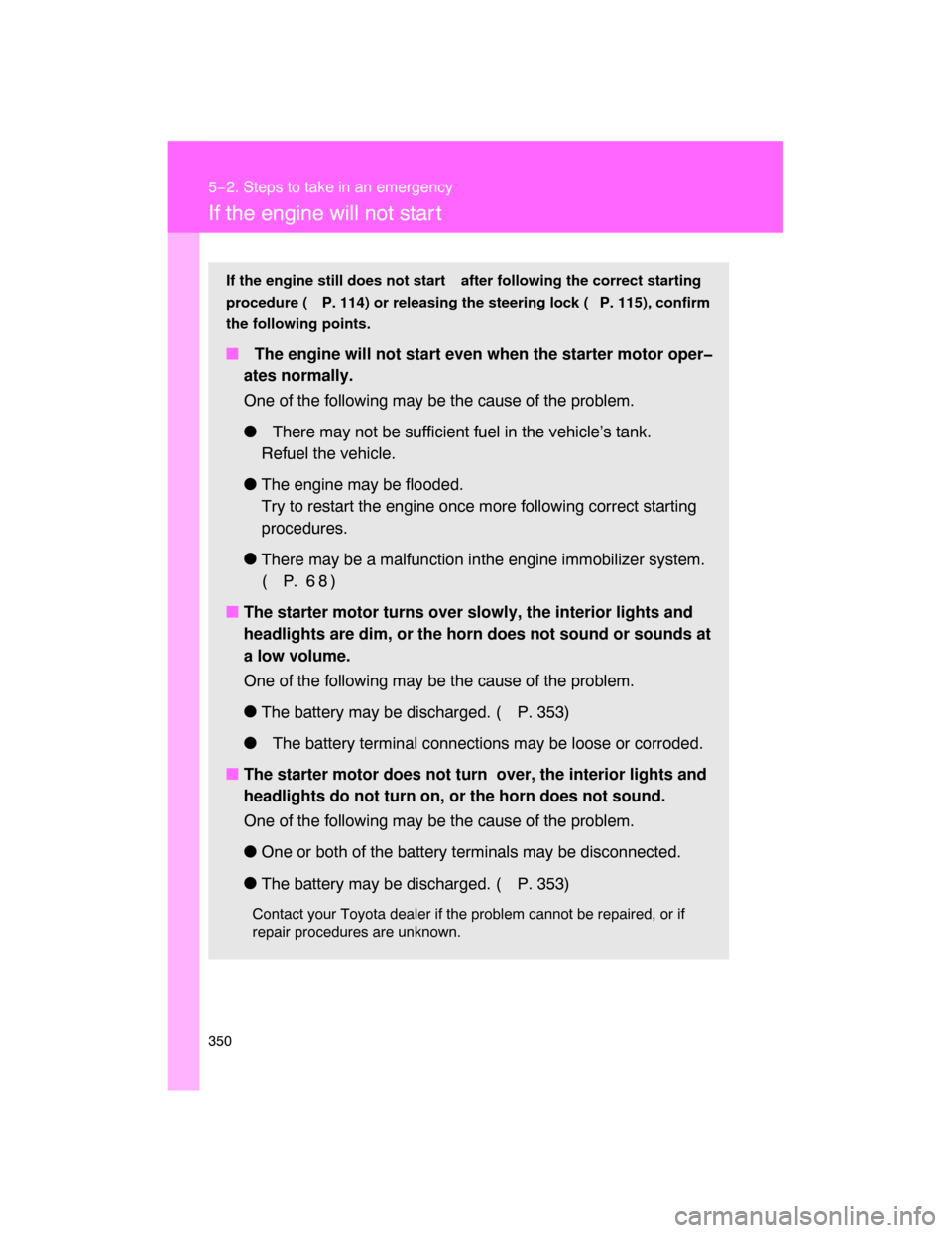Page 140 of 400

142 2−4. Using other driving systems
� Sensor detection information
� Certain vehicle conditions and the surrounding environment may affect
the ability of a sensor to correctly detect an obstacle. Particular instances
where this may occur are listed below.
�There is dirt, snow or ice on a sensor.
�A sensor is frozen.
�A sensor is covered in any way.
�The vehicle is leaning considerably to one side.
�On an extremely bumpy road, on an incline, on gravel, or on grass.
�The vicinity of the vehicle is noisy due to vehicle horns, motorcycle
engines, air brakes of large vehicles, or other loud noises producing
ultrasonic waves.
�There is another vehicle equipped with parking assist sensors in the
vicinity.
�A sensor is coated with a sheet of spray or heavy rain.
�The vehicle is equipped with a fender pole or radio antenna.
�A bumper or sensor receives a strong impact.
�The vehicle is approaching a tall or right−angled curb.
�In harsh sunlight or intense cold weather.
�The area directly under the bumpers is not detected.
Objects lower than the sensors or thin stakes etc. may be detected ini−
tially, but as they draw closer, they may cease to be detected.
�A towing hitch is mounted to the vehicle.
�A non−genuine Toyota suspension (lowered suspension etc.) is
installed.
In addition to the examples above, there are instances in which, because of
their shapes, signs and other objects may be judged by a sensor to be closer
than they are.
� The shape of the obstacle may prevent a sensor from detecting it. Pay
particular attention to the following obstacles:
�Wires, fences, ropes, etc.
�Cotton, snow and other materials that absorb radio waves
�Sharply−angled objects
�Low obstacles
�Tall obstacles with upper sections projecting outwards in the direction
of your vehicle
Page 305 of 400

309
4−3. Do−it−yourself maintenance
4
Maintenance and care
17 RADIO NO.1 20 A Audio system
18 ECU−B 10 AAir conditioning system, multiplex
communication system, SRS air−
bag system, front passenger occu−
pant classification system
19 ALT−S 7.5 A Charging system
20 HORN 10 A Horn
21 A/F HEATER 15 AMultiport fuel injection system/
sequential multiport fuel injection
system
22 TRN−HAZ 15 ATurn signal lights, emergency
flashers
23 ETCS 10 AMultiport fuel injection system/
sequential multiport fuel injection
system, electronic throttle control
system
24 EFI 20 AEFI NO.2, multiport fuel injection
system/sequential multiport fuel
injection system
25 DR/LCK 20 ADoor lock system, multiplex com−
munication system
26 TOWING 15 A Towing converter
27 RADIO NO.2 20 A Audio system
28 AM1 50 AACC, ECU−IG, IG1, RR WSH, FR
WIP−WSH, 4WD/DIFF and STA
29 J/B 50 A TAIL, PWR OUTLET, POWER
30 ABS MTR 40 A
Anti−lock brake system, vehicle sta−
bility control system, traction con−
trol system, active traction control
system, AUTO LSD system
FuseAmpereCircuit
Page 345 of 400

350
5−2. Steps to take in an emergency
If the engine will not star t
If the engine still does not start after following the correct starting
procedure ( P. 114) or releasing the steering lock ( P. 115), confirm
the following points.
� The engine will not start even when the starter motor oper�
ates normally.
One of the following may be the cause of the problem.
� There may not be sufficient fuel in the vehicle’s tank.
Refuel the vehicle.
�The engine may be flooded.
Try to restart the engine once more following correct starting
procedures.
�
There may be a malfunction inthe engine immobilizer system.
(P. 6 8 )
�
The starter motor turns over slowly, the interior lights and
headlights are dim, or the horn does not sound or sounds at
a low volume.
One of the following may be the cause of the problem.
�
The battery may be discharged. ( P. 353)
� The battery terminal connections may be loose or corroded.
�The starter motor does not turn over, the interior lights and
headlights do not turn on, or the horn does not sound.
One of the following may be the cause of the problem.
�
One or both of the battery terminals may be disconnected.
�
The battery may be discharged. ( P. 353)
Contact your Toyota dealer if the problem cannot be repaired, or if
repair procedures are unknown.